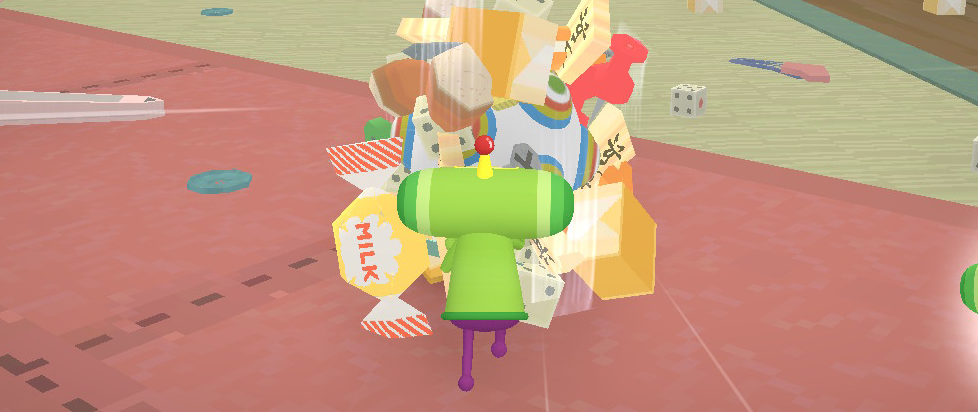
Katamari Damacy: Keep Going
There exists no greater joy in gaming that rolling objects up into a katamari and watching it get bigger and bigger. Katamari Damacy offers such a pure experience in the power of games to tickle the pleasure part of our brains that one could make the argument of its central mechanic being the ultimate illustration of why games are fun. But what makes Katamari Damacy so effective is ultimately a nested tree of different kinds of progression, a constant feedback loop that’s always validating everything you do. In a way, Katamari succeeds because it tells the player exactly what they want to hear all the time, and that’s a powerful lure.
The first progression system that Katamari Damacy offers is in the objects you roll up. When you start out, you can only roll up certain sizes of things, while bouncing off the rest. This doesn’t last, though. As your Katamari gets bigger, you’re able to roll up bigger things. This results in you revisiting areas you’ve already been to, this time hoovering up all the objects you had to pass on before. The stark contrast in experiences at the same place but different moments in your rolling journey makes you feel like you’re growing along with your katamari in a bite-sized but profound way.
The visual feedback of the katamari itself also helps matters. As you collect objects into your ball, they stay visible as you roll, and the ball will keep getting bigger and bigger. One of the great joys of Katamari Damacy is seeing the scale of the world compared to your ball, and watching it change as the stage goes on. The Prince, who you control, will look smaller and smaller until eventually you won’t be able to even see him anymore. Where you once only came up to a person’s ankles, you’ll eventually grow to be bigger than a human, then a building, then a skyscraper. The game’s sense of scale speaks pleasing volumes to us.
Related to katamari size, the blur and sound effect that happens when you hit a new size milestone should not be underestimated. Audiovisual effects have been providing the most important feedback in video games, and here is no different. Not merely content with offering the very granular validation of rolling up bigger and bigger things, the sound and blur gives you an extra little boost and lets you know that you’re on the right track. The cordoned off sections of the levels also serve this same purpose, allowing you to see more of the world once you’re big enough. Oftentimes it’s a peek into a part of the level that you’re almost not ready for thanks to the preponderance of huge objects that always appears beyond those fences. But it also gives you new milestones to hit and provides motivation to just keep rolling.
Returning to familiar parts of the levels was already touched on, but it cannot be overstated that this is the biggest key to Katamari Damacy’s success. The best part of any Katamari game is the final level where you start as a dinky ball in a big world, then work your way up until you’re rolling up entire continents. Everything comes together here: the sense of scale, the audiovisual cues, and the sense of progression you get from rolling up things that were previously too big. But the return to familiar spaces is taken to the extreme here. You start in a room as a tiny katamari, then eventually roll up enough to go back to where you started to roll up the slightly bigger objects. Eventually you’ll be able to roll up humans as you’ll barely be able to fit in the room you started in. Soon, your Katamari will be big enough to incorporate the entire house, and finally the very landmass on which it stands. No game offers the extreme sense of sliding scale that Katamari does, and it’s the main reason why it’s so pleasurable to play.
At every turn, Katamari Damacy is there to reassure you to keep going because you’re doing great. Such positive affirmations are the root of why Katamari is such a joy to play, and how mechanics and feedback come together to create an experience that isn’t just pleasurable and validating, but motivating. It tells us to keep going, that we’re on the right track.


